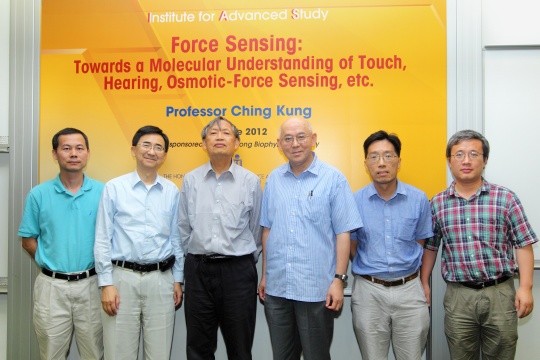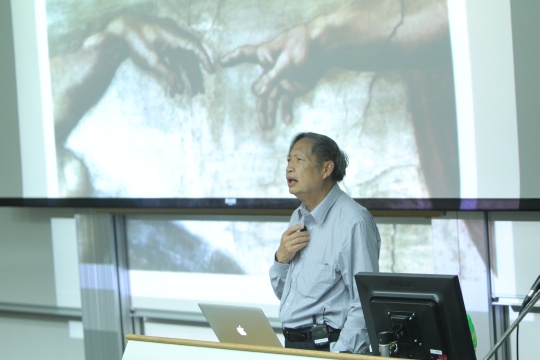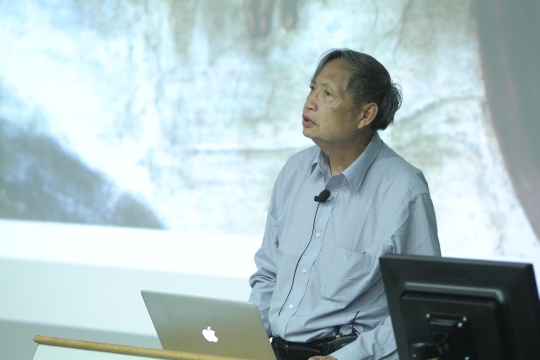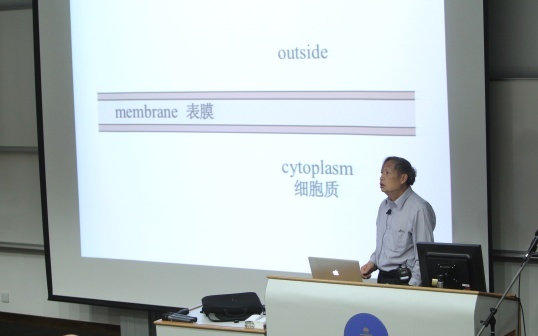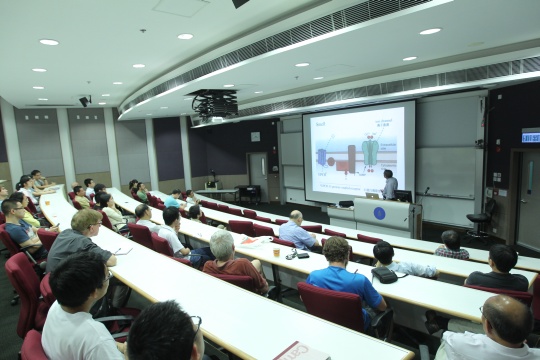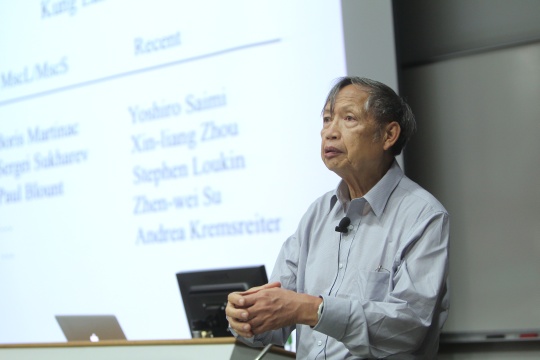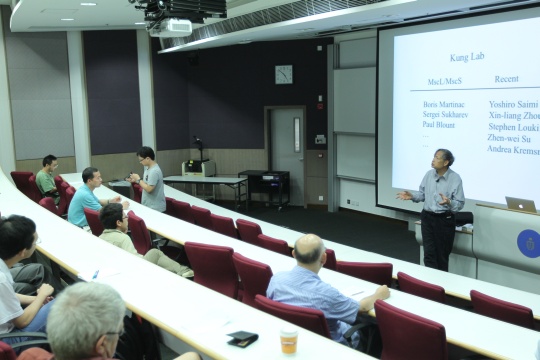Force Sensing: Towards a Molecular Understanding of Touch, Hearing, Osmotic-Force Sensing, etc.
Abstract
All life forms are subjected to mechanical forces such as impact, pressure, and vibration. What molecules allow us to hear, to heft a weight, to feel texture, and to monitor blood pressure or systemic osmolarity? Such molecules are largely unknown even in this 21st century. This ignorance is especially flagrant when compared to our thorough understanding of the molecules that sense light or various chemicals, as in the vision, smelling, and tasting. A class of ion channels (membrane-embedded proteins) can directly be opened by stretch force to generate ionic (electric) signals. Studies with biological and physical models emphasize the role of protein-membrane interface in force transmission.
About the speaker
Prof. Kung Ching received his PhD in Biochemistry from the University of Pennsylvania in 1968. He did postdoctoral studies at the Indiana University and University of California, Los Angeles. He taught at the University of California, Santa Barbara for three years before settling in the University of Wisconsin-Madison in 1974, at which he is currently the Vilas Professor of Genetics and Molecular Biology.
Prof Kung’s laboratory combines genetics, biochemistry and biophysics to study microbial ion channels. He was inducted into the US National Academy of Sciences in 2011 for his work on ion channels, particularly those responding to mechanical forces. He was elected a Fellow of the American Academy of Microbiology in 2012.

